In video games, we've reached a point where what's old is new again. There's still a move toward polygons and refining the 3-D look, but more and more, games lean toward the use of sprites and old perspectives to paw at nostalgic feelings and attract younger gamers who appreciate the classic look and feel of the titles. At first glance, players may see Shovel Knight as a game that simply apes the look of an old 8-bit platformer. Luckily, it utilizes good gameplay mechanics and fuses it into a package that feels like a forgotten gem of that gaming era.
The reverence can also be seen in the story. You play the role of Shovel Knight, who roams the countryside with your companion, Shield Knight, dispensing justice and searching for treasure. One day, you discover a tower and fight with its Enchantress, but Shield Knight is captured and you get knocked out. You live alone and let evil have its way until you see the tower rise again. With the hope that you can atone for your past failure, you pick up your trusty shovel and set forth to defeat the Enchantress and her Knights of No Quarter.
After a brief introduction, you're thrown into the game like almost all NES games of the era: straight into the action with no tutorial whatsoever. You soon discover that the game relies heavily on a two-button setup for almost all of your actions. One button is dedicated to jumping and one for swinging your shovel like a sword. Attacks are only performed horizontally, so air attacks have to be done by jumping up and striking. For those who grew up playing NES platformers, these basic actions should be very familiar. Since you're equipped with a shovel instead of a sword, you can do a few extra things, including breaking open treasure chests and destroying blocks of earth to open secret passageways. There are also mounds of dirt to dig up for gems, perhaps the most shovel-like activity in the game.
Shovel Knight also implements a few things, including mechanics from other platforming greats. You have a pogo jump just like in DuckTales, except this one is very easy to execute and only lets you get the bounce effect from certain objects and enemies. The collected gems are currency that can be used to buy special abilities and spells. You can execute them with the traditional Up and Attack Button combo like in the old Castlevania games, or you can assign them to a separate button since modern controllers have some more options. You also grab the chance to upgrade your armor, shovel, magic, and health in towns that look like they were ripped out of Zelda II: The Adventure of Link, though the characters are more eccentric. The rest of the game also shows off further influence from older platforming games, like an overworld map that is reminiscent of Super Mario Bros. 3. You also have a limited ability to take on almost any stage on the map in any order you desire.
In addition to the mash-up of old elements and influences, the game also adds its own contribution to the genre. Checkpoints are in almost all of the levels, and they're visible. For those who want a tougher challenge, you can destroy these checkpoints for more gems at the risk of having to restart further back in the game if you die. The game offers unlimited lives, but it also takes away one-third of your gems at the exact spot where you died. You can get it back, but if you die again before you reach it, you lose another one-third and the previous stash disappears. Considering how valuable gems are in terms of upgrade opportunities, each death still feels significant.
All of the mechanics blend together really well thanks to some tight controls. Your character always remains responsive, and all of his actions are precise. Jumps have the right amount of weight, and attacks of all kinds feel like they're unleashed at the right time. The game also ensures that almost all control types are supported. Support for keyboards and the Xbox 360 gamepad are expected by now, but the developers are still adding support for the DualShock 3 and some older PC specific gamepads.
Tight controls and good gameplay mechanics can go to waste if the level design is sub-par. Luckily, Yacht Club Games has done its homework and come up with some very nice level designs. The knights you're fighting have themes, and the levels reflect that. Polar Knights, for example, have a snow-themed level while Spectral Knights deal with darkness and the undead in a graveyard-themed level. The layout of each level is done in a linear way, but observant players will find a good amount of hidden areas if they look hard enough and experiment with every solid object they see. Only a few enemies make repeat appearances in each stage, and some of the platforming tricks you may see in one stage rarely get repeated in another one. There's a feeling of freshness and some unpredictability with each stage, and that's a perfect recipe for a good but fair challenge.
Speaking of bosses, there's some great design when it comes to the fights. Each of the themed adversaries sticks to the classic mechanic of having patterns in their fights, and though some patterns are long, you'll discover them if you live long enough or die too often. They'll do a good job of changing things mid-fight, but they don't feel overpowered. Their abilities make them similar to Mega Man bosses, and you actually look forward to a tussle with them instead of dreading it. The only exception to this is the final boss and the levels leading up to her, since they can test even the most skilled player. While it is much more frustrating than the other levels, it's forgivable when you notice how it is patterned after the Dr. Wily stages and fights of Capcom's blue bomber.
Truthfully, there aren't too many flaws with Shovel Knight, and most of those can easily be corrected via patching. If you take a look at the Kickstarter page, you'll see that most of the stretch goals didn't make it into the initial release. It isn't that big of a loss, but if you're looking for local multiplayer via battle mode, gender swapping, and the ability to play as the bosses, you'll have to wait. The only thing that can't be patched in is the use of some of the spells, which feel like they're only good for one specific situation in the entire game. They're still cool to have, but it would've been nice to have the chance to use them more frequently.
When a game is described as looking retro, it's usually done in a pretty half-hearted way. The scene may be made of pixels, for example, but the movements are too smooth or there are more advanced techniques that remind you this game couldn't have been made on old hardware. Shovel Knight has a few of those tricks in the graphics department, but the hints are pretty subtle. The color palette may show off a few more on-screen colors than a typical NES game, but generally, the colors are authentic enough in shading and appearance. The pixel look is unmistakable, and aside from the widescreen and high-resolution support, it retains a sharpness similar to what is seen when the Wii U upscales NES games to HDTVs. Animations look good but aren't overly smooth, so animation transitions are exactly like they were in the days of the classic Capcom platformers or, more recently, Mega Man 10. About the only big hints that this is a modern game are the lack of slowdown and flickering, the ability to handle loads of characters of all sizes on-screen at all times, and the kind of scrolling that started to appear in late-era NES games. Otherwise, this game successfully accomplishes the NES look that only a small handful of others have tried to emulate.
While the graphics have a hint of modernism, the audio is completely 8-bit. Voices are completely absent because spoken text is accentuated by chirps of varying levels. Effects are prevalent and adopt the limitations of old hardware, with strikes sounding just as beefy as they used to, and jumps adhere to the same rules. Perhaps the most notable part of the sound is the music, which sticks to the 8-bit vibe with mono sound instead of going for stereo, like most modern chiptune tracks do. All of the tracks are highly memorable, which should come as no surprise when you discover that this is a collaboration between Jake Kaufman, who recently did DuckTales Remastered and Manami Matsumae, who was responsible for the original Mega Man and U.N. Squadron, among other titles. For retro enthusiasts, this is the kind of thing you pump up loudly through your sound system.
To put it succinctly, Shovel Knight is great. It pulls off the trick of looking and sounding like a classic game (with a few embellishments here and there) and playing like a mash-up of the best game mechanics of the time. It embraces the old-school mentality wholeheartedly but leaves some room to pick up some modern trappings for wider accessibility. Even though it sports the perfect length for a title in this genre, the large number of extras makes it a title with more than enough staying power for all gamers. Unless you absolutely must have your games made of polygons or completely hate the indie movement, you need to have Shovel Knight in your video game library.
Score: 9.0/10
More articles about Shovel Knight: Treasure Trove


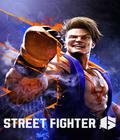


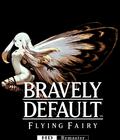
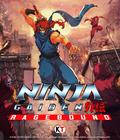
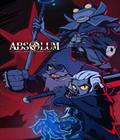

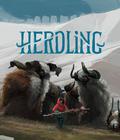

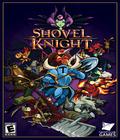 Shovel Knight is a sweeping classic platform adventure game with awesome game play, memorable characters and an 8-bit retro aesthetic.
Shovel Knight is a sweeping classic platform adventure game with awesome game play, memorable characters and an 8-bit retro aesthetic.




